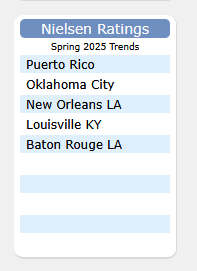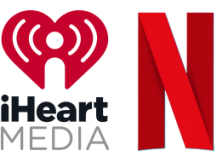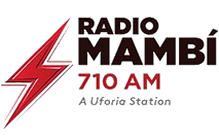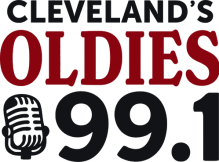Advertisement
|
There Are Only 3 Ways to Increase Radio Ratings
| RADIO ONLINE | Thursday, October 24, 2019 | 7:58am CT |





|
 |
The following article is a special Radio Online contribution from Tracy Johnson, CEO & President of Tracy Johnson Media Group
Most likely, you know how radio ratings work, you're probably wondering how a broadcaster should respond. Playing the Ratings Game is both art and science. In this article, I'll share the only 3 ways to increase radio ratings.
The components that make up the ratings system are the same whether a market is measured by PPM or Diary methodology. The ratings Math is explained in detail here, but the short version is that there are just two elements that drive ratings growth.
Cume (Cumulative Audience): The total number of people listening to a station in a day (Daily Cume) or week (Weekly cume).
Time Spent Listening (TSL): The total number of quarter hours an individual ratings respondent listens to a radio station.
Cume and TSL are Inseparable
Before explaining how to increase radio ratings by impacting those two core elements, it's important to understand that cume and TSL are different measurements, but inseparably related. Many stations cause damage to their stations by over-reacting to ratings results. I call it the Ratings Freak Out.
The constant rule is that when TSL goes up, cume almost always goes down. And vice-versa. When cume is up, TSL is down.
The reason is because of how little most of a station's cume listens to a radio station compared to fans. More than 50% of the cume for most radio shows tunes in less than 2.5 minutes per day Yet the math of ratings reports are stated as an average. When a station's cume shows an increase, it's much more likely the gains are from new cume that spends very little time with the station. That brings the average TSL down. And when cume is lower, it's not fans going away. it's secondary and tertiary listeners. That leaves heavy users making up a greater percentage of the audience. So TSL increases.
Understanding the relationship of cume and TSL is key to managing a ratings strategy properly. When it comes to The Ratings Game, the radio industry is just like any other business. There are only three ways to grow a business. And only 3 ways to increase radio ratings. No matter what strategies a brand attempts to implement or how hard they work on the tactics, it all comes down to just three simple concepts. Keep them in mind as your station competes to win a larger audience.
Increase Radio Ratings: Get More Customers
The more customers a business has, the more money it makes. And it's the same for radio. The larger the audience, the greater the chance to increase radio ratings. However, in business and in radio, not all customers are created equal. An electronics store can advertise a big weekend sale with a special price of $199 for a 65 inch television. It will increase their customer base for sure. Store traffic will increase and they'll quickly sell out of TVs.
The weekend sale is successful in building a larger customer base. But a large majority of these newly acquired customers don't become loyal, repeat customers. They just came in for the special offer. The next time they are in the market for electronics, they're likely to shop for the next great deal or go back to their "favorite" outlet to shop.
Radio & New Customers
It's the same for radio. A major advertising schedule or marketing campaign can raise awareness. Combined with a special offer to win prizes, it can increase a station's customer base (cume) for a period of time. But that doesn't turn new customers into fans. When the stimulus (special offer) is over, listeners typically return to normal patterns. However, just as in retail, new radio listeners make up a small fraction of a station's overall listening. Research shows that nearly half (50%) of a radio station's listeners spend less than 2.5 minutes per day listening to that station!
This is not to suggest advertising, marketing and contesting are unimportant. Stations must continue to get new listeners by attracting new listeners. Think of it as feeding a funnel. The more that go into the top, the more that come out the bottom. Smart broadcasters develop a marketing strategy to nurture new listeners to use the station more and, over time, become fans. After all, fans make up a disproportionate amount of overall listening (as much as 90%). Just realize that merely getting more listeners is likely to be expensive and drives Listening only for the short term.
Convince Existing Customers to Buy More
A popular way to increase sales is leveraging existing customer relationships to increase their spending.
Fast food restaurants understand that the cost of acquiring a new customer is much higher than the cost of getting more value from existing customers. That's why they pile on the value when a customer orders:
- Would you like fries with that?
- Upgrade your sandwich to a meal?
- Supersize your order?
- How about dessert with that?
The wholesale cost of a Coke is almost nothing, but if the restaurant can sell a large drink for just 50 cents more than a medium, their profit margin skyrockets. Nearly every business has a version of add-on product selling. Car companies earn more money from upgraded leather interiors, undercoating, enhanced sound systems, built-in navigation system, satellite radios and OnStar than the actual car. Convince a buyer to return for service and the lifetime value of that customer is worth selling the car at cost, or even below.
Upselling Radio Listeners
For retail, "fries with that" is low hanging fruit. It makes sense to train sales teams to get in the habit of adding more to an order. It's a valid way to increase radio ratings too. If a radio station can convince current listeners already listening to tune in for an extra quarter hour or two, Time Spent Listening (TSL) increases. Stations can do that with great content, solid promotion and effective teasing. But the super-size approach for radio is hard because most listening takes place in the background. Listeners take radio along as companion to a foreground activity. This is most common when driving. As a result, listening patterns are affected when a listener's foreground activity changes.
It may be possible to extract a few extra quarter hours with amazing story arcs or serial content (I just had to stay in my car to hear how the story ends), but that is uncommon. How many listeners adjust their schedules to listen to the radio? Right. Nobody skips a meeting or tells their kids they can't go to soccer practice because "mama has to listen to the radio". That leaves one powerful way to increase radio ratings by getting more listening.
Get Existing Customers to Come Back More
The third and final way to grow revenues and increase radio ratings is to convince existing customers to return more often. This is a growth key for every single business. That electronics store with an ad for the cheap televisions can capitalize if they follow up with another offer to get new customers to return. Over time, they may convert a percentage of new customers into loyal patrons. Nearly every retail business realizes the intrinsic value of returning customers. Loyalty programs are designed to increase customer occasions, which creates habits over time.
For example, the Starbucks Treat Receipt promotion offers customers a 50% off discount if they bring their receipt from before 10am to get a drink after 2. Their goal is to recycle their existing customers and in doing so, create new usage patterns that often remain even after Treat Receipt expires. In this way, Starbucks understands how to recycle audience with more occasions better than radio.
Increase Radio Ratings With More Occasions
This is the most reliable way for stations to increase radio ratings.
Smart programmers, managers and promotion managers can drive more occasions of listening. Do it often enough and listeners will create new habits.
Here are a few ways to do it:
- Schedule locked in features at specific times. Popular features become appointment listening when programmed and promoted properly. Help the audience form habits.
- Constantly tease and promote content that is similar to what is on now. 100% of those listening enjoy something about what they're hearing. Help them find more of it on your station. That applies to promoting music as well as content. The best time to promote content is at the end of similar content.
- Promote features and benefits available in different time slots. Even popular radio shows reach less than 60% of a radio station's total audience. That leaves a large audience that likes the radio station but isn't listening in key time slots. Take a lesson from Starbucks.
- Make it a point to lead listeners from podcasts, social media and digital platforms to on-air appointments. Many broadcasters chase the latest technology, social platform or content distribution system. Those are valuable, but use them to feed the core brand!
Conclusion
The Ratings Game has a many moving parts, and there is much to understand. But at the core, winning the game is relatively simple. Not easy, but simple. Learn how to increase radio ratings in all three ways, with a heavy emphasis on getting existing listeners to remember to come back more often. This is the most sustainable and successful way to win.
Advertisement
|
Latest Radio Stories
Ed Lover, Miss Jones Exit Audacy's 94.7 The Block
|
Superadio: Ebro Brand to Continue Beyond Current Show
|
Netflix, iHeart Near Video Podcast Deal With YouTube Exit
|
Advertisement
|
WAQI (Radio Mambi) to End Live Talk Programming
|
Nueva Network, AdGrid Launch Hispanic Audience Accelerator
|
Hartline Flips Fiesta 99-1 Cleveland TN to Oldies 99-1
|

















